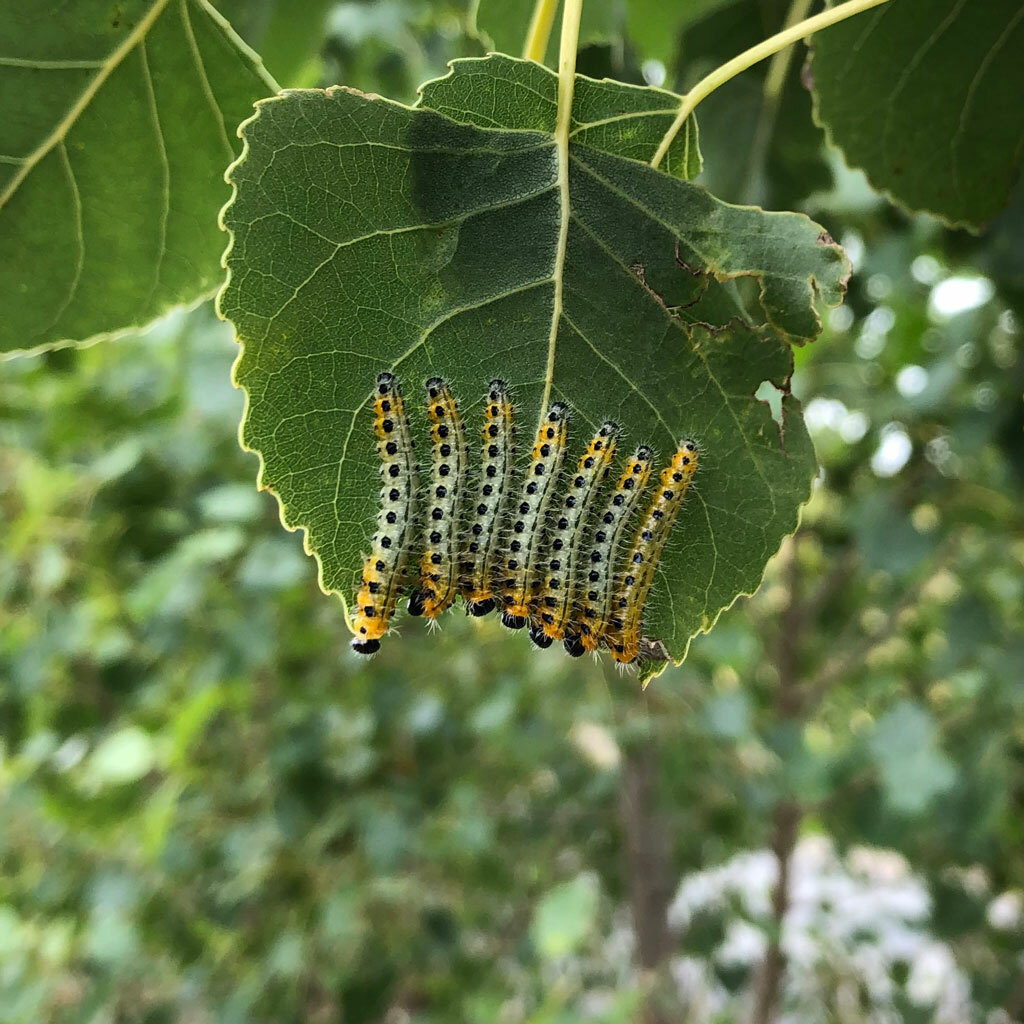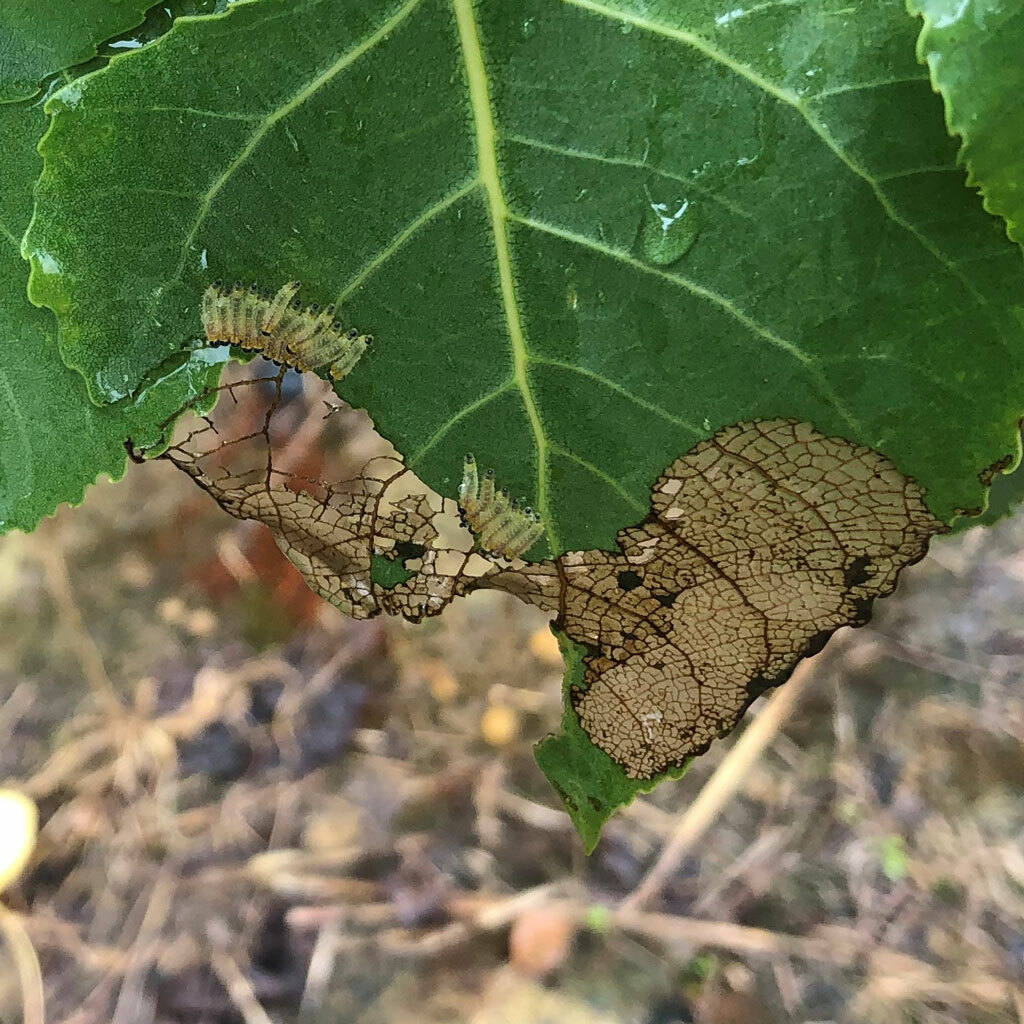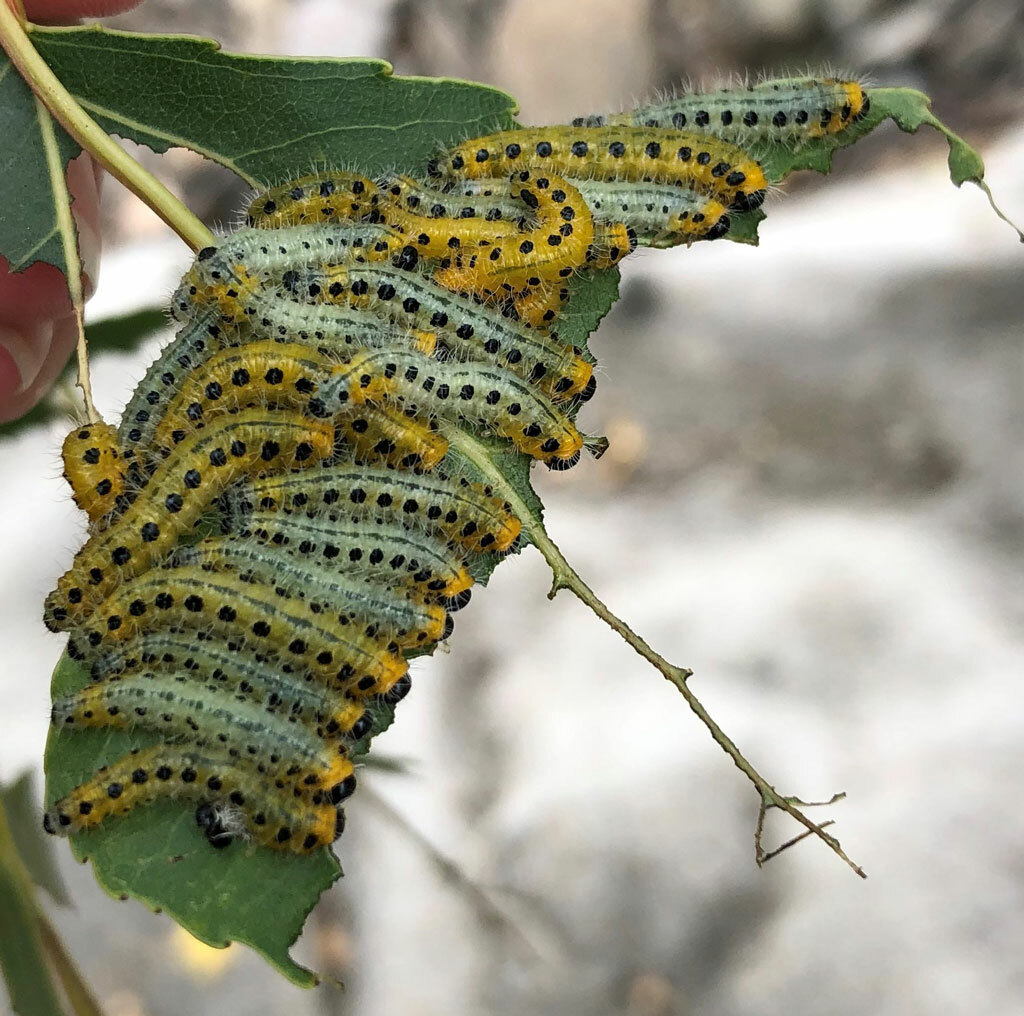Extra eyes needed to find spread of new pest
Posted on December 10, 2021

Help is needed to find a new pest invading the South Island.
“We’re asking farmers to scan their eyes over their poplar trees for a hairy poplar sawfly,” Poplar and Willow Research Trust general manager Ian McIvor says.
“Although currently only known around Dunedin and the Taieri Plains, this bug could be moving undetected around the country, especially after potentially hitch hiking through the winter on farm machinery. We need you to spot it for us.”
Dr Toni Withers is a senior entomologist in Scion’s Ecology and Environment Group. Scion is a Crown Research Institute specialising in research, science and technology development for the forestry, wood product, woodderived materials, and other biomaterial sectors.
Dr Withers says the hairy poplar sawfly has a fluffy yellow caterpillar covered in rows of black spots, and these little nibblers cuddle up to each other while they feed on the leaves. The chewing life stage is most obvious from November through to February.
“They prefer to nibble on the lower branches, and this will help you to spot them. At this feeding stage they look exactly like caterpillars, but they’re not the young of a moth or a fly; they are in fact the larvae of a type of plantfeeding wasp, commonly named a sawfly. It’s similar to the sawfly that feeds on willows, but is not a type of insect we naturally have in New Zealand.
“They are from the northern hemisphere, having evolved in Europe on European poplars, and since the 1880s have also invaded North America where they damage American poplar species from time to time. They are capable of defoliating entire trees, but we hope they will never outbreak to such an extent in New Zealand, due to our more temperate climate. It may become a more serious pest when it reaches areas with warmer summer temperatures, such as Central Otago or the east coast of the North Island.”
The Poplar and Willow Research Trust, along with support from the Ministry for Primary Industries’ (MPI) Sustainable Food and Fibre Futures fund and regional councils, has been studying the biology and the impact this pest may have on poplar nurseries and plantings. The Trust develops cultivars specifically for New Zealand’s climatic conditions and future needs; researchers are investigating which cultivars will be the most susceptible and the most resistant.
“Currently most of the poplar tree species in our landscape are susceptible to the poplar sawfly to some degree.”
If you have found a hairy yellow caterpillar, between 1cm and 3cm long, chewing on your poplar leaves, please take a photograph and upload it to https://inaturalist.nz/. This will be shared with professional entomologists who will identify it, and then be able to track the pest as it spreads through New Zealand.
For more information please contact Ian McIvor 021 226 8673 or ian.mcivor@plantandfood.co.nz.

Photo credit: Scion

Photo credit: Scion